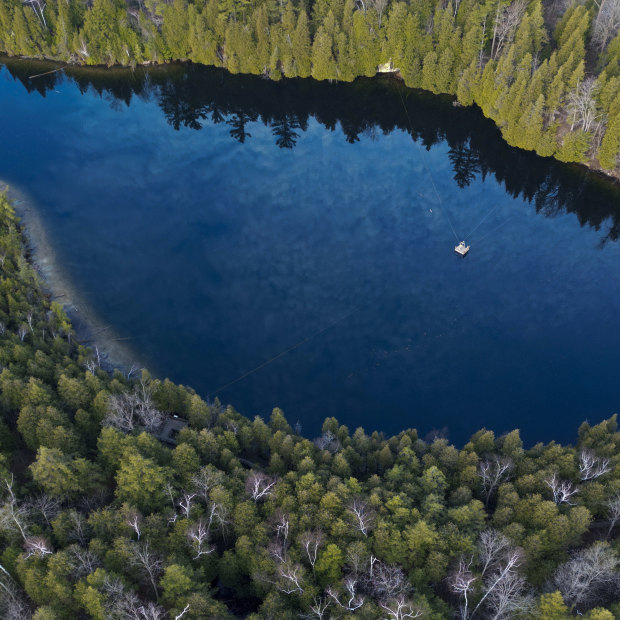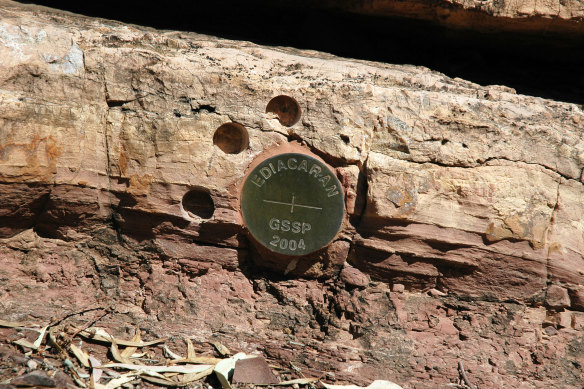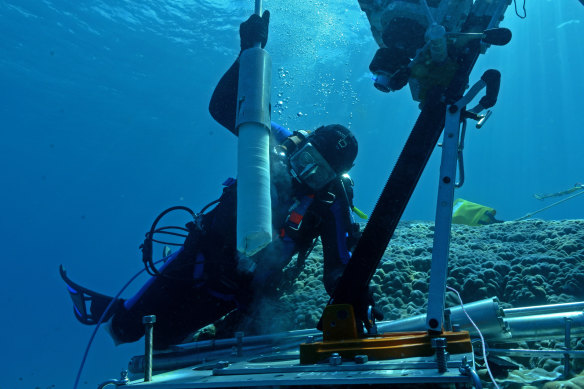How Australian coral and an unremarkable lake will help usher in a new epoch
Scientists are on the verge of formally declaring a new geological epoch based on evidence from a remote body of water in Canada, and Flinders Reef in Queensland.
By Angus Dalton

Crawford Lake in Ontario Canada has been selected as the “golden spike” that demonstrates a tipping point between geological epochs. The lake’s sediment could usher in the formal announcement of the Anthropocene.Credit: Bonnie Jo Mount / Washington Post
Scientists are on the verge of declaring a new epoch as they gather hard evidence that humanity has permanently altered the planet’s geological record through industrial activity and the detonation of nuclear bombs.
The term Anthropocene – the epoch defined by humanity’s impact on the earth – has been in use for decades. However, geologists haven’t formally announced the end of the current epoch, the Holocene, which began 11,700 years ago at the end of the last Ice Age.
To hail a new epoch, age or era, geologists must decide on a preserved physical reference point that demarcates a clear, global shift into a new geological time period. The point is called a global boundary stratotype section and point (GSSP) – also known as a “golden spike”.
On Wednesday, after a three-year hunt, a group of scientists called the Anthropocene Working Group unveiled their golden spike: a small, remote body of water in Ontario, Canada, called Lake Crawford.
It’s a 2.4-hectare lake that only takes 15 minutes to loop by foot, but it has an unusual depth of 24 metres and the body of water is “meromictic”, which means the top and bottom layers don’t mix.
Every summer, warm water triggers calcium and carbonate ions from the lake’s limestone bedrock to crystallise and sink into the still depths like snow, forming a yearly white layer on the bottom of the lake that traps organic material.
“The bottom of the lake is completely isolated from the rest of the planet, except for what gently sinks to the bottom and accumulates in sediment,” said micropaleontologist Professor Francine McCarthy.

Australia hosts the Southern Hemisphere’s only golden spike, which is hammered into rock layers in the Flinders Ranges to demarcate the end of the Cryogenian Period and the start of the Ediacaran Period.Credit:
“The record at Crawford Lake is representative of the changes that make the time since the mid-twentieth century geologically different from before, and worthy of, we think, a golden spike.”
At Crawford Lake and eight other golden spike candidate sites studied by the working group, layers of the earth’s history can be peeled back to show the arrival of fly ash from the burning of fossil fuels, nitrogen from fertilisers, microplastics, and plutonium – an element which didn’t exist in the atmosphere until nuclear bomb tests in the 1950s.

Detail of a core sample from Crawford Lake.Credit: Bonnie Jo Mount / Washington Post
That’s why 1950 is the proposed beginning of the new epoch. At every site, from coral to polar ice, isotopes of carbon and plutonium from nuclear fallout are found in the layers that correlate to the ’50s.
Chair of the Anthropocene Working Group, Professor Colin Waters, said the spike in plutonium allows for a precise geochemical boundary between epochs that coincides with the rapid uptick in industrial activity called the Great Acceleration.
“Across the planet you start to see a synchronous change in the middle of the 20th century … as well as the indicators of the effects of things like increased burning of fossil fuels, changes to agricultural practices, increased industrialisation, increased globalisation and transfer of species across the planet,” Waters said.

A scientist takes a core from a coral off Queensland. Flinders Reef was considered as a “golden spike” candidate because corals hold temperature and chemical data going back hundreds of years.Credit: Australian Institute of Marine Science
While Crawford Lake will be used as the main case for a new epoch – and a new geological age called the Crawfordian age – evidence from other candidate sites including Australia’s Flinders Reef will be considered as well.
Dr Neal Cantin, a coral ecophysiologist at the Australian Institute of Marine Science, said corals add a layer of calcium carbonate each summer – similarly to the layers at the bottom of Crawford Lake – which meant they can also be used to peer back through time.
Cores taken from six-metre high stony corals in the Coral Sea can be analysed to identify yearly ocean temperatures going back to the 1700s. The corals also show spikes in carbon and plutonium isotopes from the 1950s nuclear blasts.
“It’s a pretty distinct timestamp, and that’s what’s important for the defining of the Anthropocene epoch,” Cantin said. “Do you have a signal that’s distinct, and uniform, and happening all over the world?”
The AWG will report to its parent body, the International Commission on Stratigraphy, which is expected to vote on the declaration of a new epoch in August 2024. Scientists hope the evidence of human alteration of the earth – captured in corals, mud, ice and peat bogs – sparks change.
“I can think of one other species that has affected the planet more,” McCarthy said. “The cyanobacteria who back two billion years ago oxygenated the atmosphere. The cyanobacteria did not have the ability to think it through, recognise what they were doing and consider the consequences. But we do.
“Hope lies as much in humanity as it does in science.”
Enjoyed this article? The Examine newsletter explains and analyses science with a rigorous focus on the evidence. Sign up to get it each week.